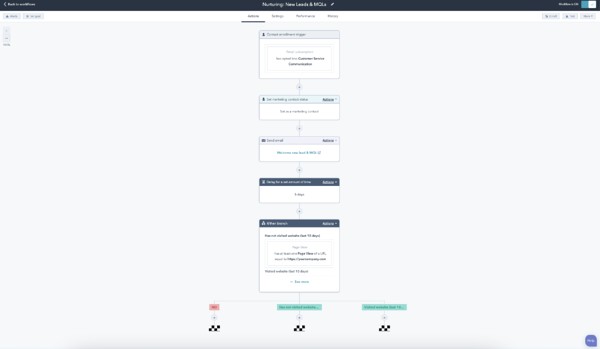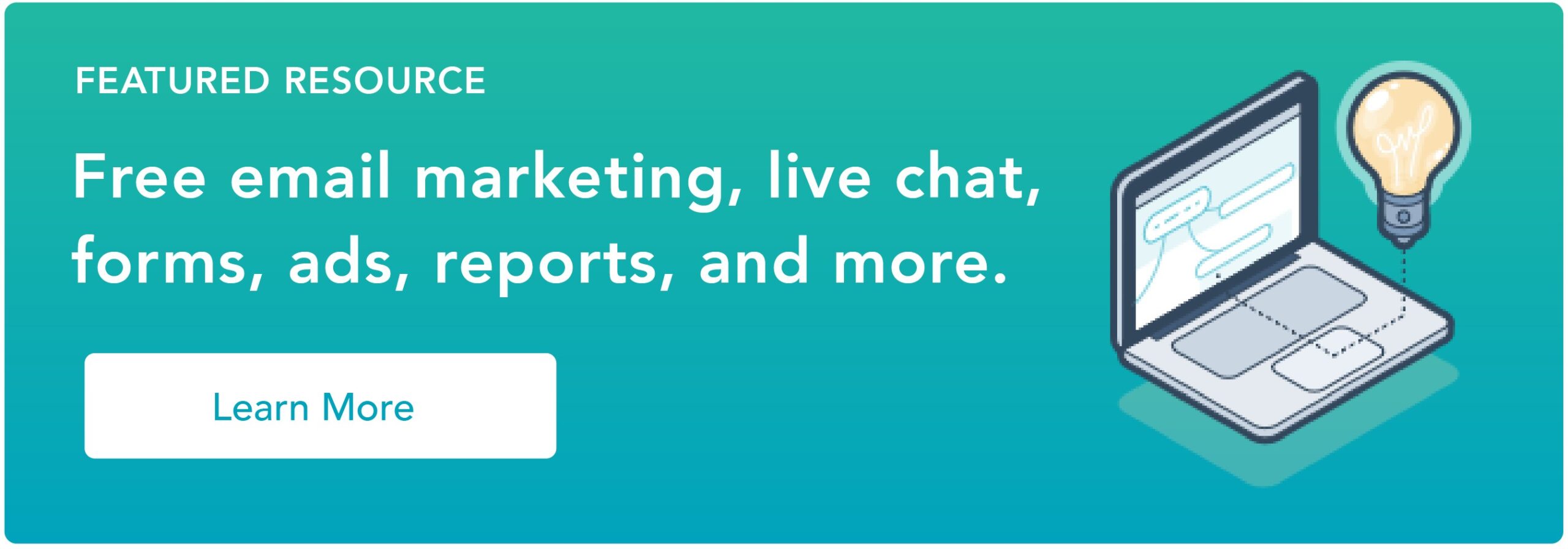No matter how many products or services you sell and offer, or how small or large your business is, no two customers are exactly the same.
Because of this, it's important to ensure you're always identifying the trends and patterns that exist among your customers and target audience. In doing so, you'll have the data and information necessary to effectively target, reach, convert, and retain those people.
To help you with this, turn to the process of behavioral segmentation.
Behavioral Segmentation
In this blog post, we’ll review the definition of behavioral segmentation (which is a process that's part of behavioral marketing), a tool that can help you group your customers based on their behaviors and actions, as well as examples of behavioral segmentation.
Behavioral Segmentation
To support your behavioral segmentation efforts, we recommend implementing a tool like HubSpot's Behavioral Targeting software.

With a tool like HubSpot, which comes in a free or paid version with one of the premium Marketing Hub plans, you can collect data about how your target audience interacts with your website, content, and other marketing materials.
You can also take advantage of the active list feature which is used for advanced customer segmentation, targeting, and audience building.
By incorporating HubSpot into your behavioral segmentation workflow, you'll send targeted messages and relevant material to your audience members at the right time. This process is also automated with audience triggers.
With HubSpot's Behavioral Targeting tool, you can also:
- Create hyper-segmented lists based on persona and their engagement.
- Leverage CRM data (via your connected, all-in-one CRM platform) to customize your content.
- Share well-timed and engaging nurture campaigns.
- Consistently identify and record specific behavioral events throughout the buyer's journey that lead to conversions among your prospects.
Behavioral Segmentation Variables
The behavioral segmentation variables that you need to consider while working on the categorization of your audiences include:
- Sought-after product/service benefits of your audience members.
- Audience member's product/ service usage rate.
- Audience member's loyalty status.
- Stage of the buyer's journey an audience member is in.
- Size of your market segment.
- Level of accessibility your market segment has to your product or service.
- How niche your market segment is.
Behavioral Segmentation Examples
There are a number of behavioral segmentation examples — a.k.a. ways to segment your customers based on behavior. Here are some common examples.
1. Purchase Behavior/ Transaction History
Look at a customer's purchase behavior and transaction history. This provides insight into how and why they decide to convert as well as which stages of the buyer's journey go smoothly whereas where a prospect may come to a bit of a roadblock along the way. It also gives you an idea of which behaviors are likely to accurately predict a conversion.
2. Occasion
Was it a specific occasion or point in time that influenced your customer's decision to convert? For instance, is there a specific point in time during the year that they'll interact with your brand (e.g. if you're an online greeting card service, you may get repeat customers around the winter holiday season every year). Is a purchase decision based on the time of day or even life stage?
3. Customer Loyalty
Customer loyalty provides a solid look at customer behavior — loyalty relates directly to a customer's habits, actions, needs, usage, and the timing of their actions.
To use customer loyalty when segmenting customers based on behavior, think about: 1) which parts of the buyer's journey are so delightful that they result in loyalty, 2) how you currently keep loyal customers feeling delighted, 3) which prospects are most likely to become loyal, and 4) which attributes do your loyal customers share.
4. Benefits Sought
Identify what your customers are looking to get out of your product or service — of all of your features, which do they need most to resolve the challenge(s) that they're experiencing? What specific benefits do they get out of your product and which of those benefits are most important to them?
Determine which of those benefits are influencing their decision to use your product/service most.
5. Customer Journey Stage
Understanding which stage of the customer journey leads to the most conversions or which stage prospects get hung up on most frequently is beneficial information when predicting behavior and segmenting customers based on those behaviors.
However, it's important to note that using customer journey stages in behavioral segmentation can be difficult because there are so many stages — and within those stages are multiple touchpoints that contribute to behavior or decision to remain in a stage, or move forward to a new stage, of the buyer's journey.
That's why it's recommended to use a platform like your CRM or an AI/ machine learning tool — they record and track all interactions throughout the buyer's journey to ensure you're getting a complete view of your customers' buyer's journey behavioral data.
6. Engagement
Engagement refers to the type and frequency of engagement you see from certain customers. You might segment your customers based on high engagement versus average engagement versus occasional engagement.
Highly engaged individuals are those who have incorporated your brand into their lives regularly.
Average users may engage with your brand or product/ service fairly regularly but may not take advantage of its full potential and capabilities.
Occasional users may just engage with your brand or product/service randomly based on their specific need but don't rely on it.
7. Usage
Usage refers to how and/or how much a customer uses your product or service. This may entail segmenting your customers based on how they actually use the product/service, how frequently they use it, how long they use it for in a single session, or which features they use most.
You might choose to segment your customers further into more specific usage categories — for instance, heavy users versus average users versus light users.
Grow Better With Behavioral Segmentation
Behavioral segmentation is a great way to effectively and efficiently target your leads and customers to increase conversions. It helps you time your communications and follow up, and tailor your content in a way that feels personal. Be sure to keep behavioral segmentation variables in mind and incorporate a tool like HubSpot for further support throughout the process.

